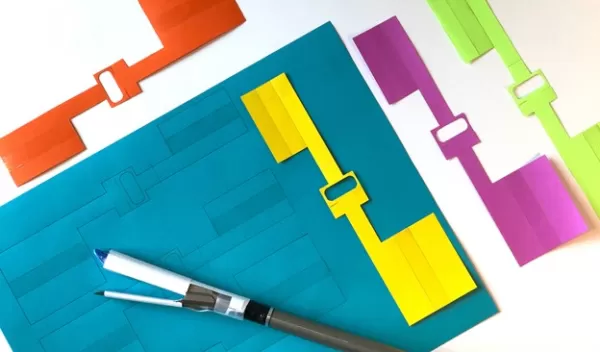
An origami-inspired medical patch for sealing internal injuries
Many surgeries today are performed with minimally invasive procedures -- a small incision is made, and miniature cameras and surgical tools are threaded through the body to remove tumors and repair damaged tissues and organs. The process results in less pain and shorter recovery times compared to open surgery.
While many procedures can be performed this way, surgeons can face challenges at an important step in the process: sealing internal wounds and tears.
Taking inspiration from origami, engineers at the Massachusetts Institute of Technology have now designed a medical patch that can be folded around minimally invasive surgical tools and delivered through airways, intestines and other narrow spaces to patch up internal injuries. The patch resembles a foldable, paper-like film when dry. Once it makes contact with wet tissues or organs, it transforms into a stretchy gel, similar to a contact lens, and can stick to an injured site.
In contrast to existing surgical adhesives, the team's new tape is designed to resist contamination when exposed to bacteria and bodily fluids. Over time, the patch can safely biodegrade away. The U.S. National Science Foundation-funded team published its results in the journal Advanced Materials.
The researchers are working with clinicians and surgeons to optimize the design for surgical use, and envision that the new bioadhesive could be delivered using minimally invasive surgical tools, operated by a surgeon either directly or remotely by medical robot.
Given the limitations of current designs, the team aimed to engineer an alternative that would meet three functional requirements: It should be able to stick to the wet surface of an injured site, avoid binding to anything before reaching its destination and, once applied to an injured site, resist bacterial contamination and excessive inflammation. The team's design meets all three requirements, in the form of a three-layered patch.
"Surgical robots of the future may resemble thin, flexible threads, able to travel easily through blood vessels and other natural channels of the body," says Jordan Berg, a program director in NSF's Directorate for Engineering. "But reaching the diseased or injured spot is only half the battle -- these tiny robots also need to carry and employ their life-saving tools.
"This healing patch can be made biologically inert and folded for transport so it does not interfere with the mobility of the robot. Once at the damaged site, the robot can unfurl the patch and apply pressure to activate its bioadhesive properties."
Creation of this remarkable device is a notable achievement, according to Berg, "made possible only by the convergence of deep cross-disciplinary expertise in mechanics, biomaterials and soft robotics."


